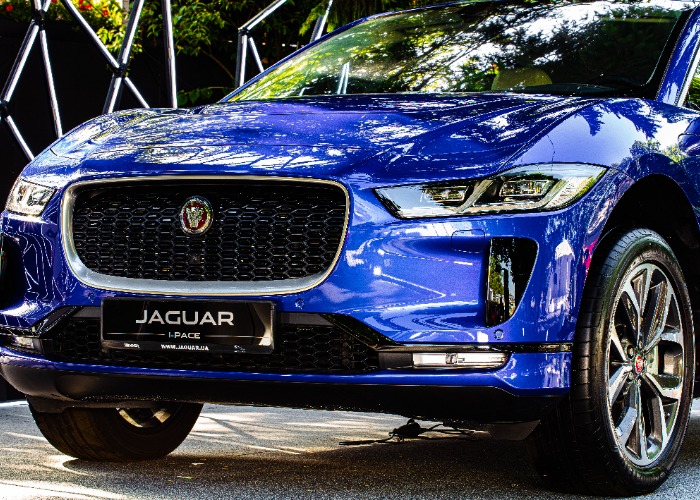
While some used cars have actually increased in value, others have seen their value plummet. Here are the 10 models that have been worst affected in recent months
If you’re looking to sell your old motor, then you’ll be hoping to get a good price for it.
And while the way that you go about selling your car will have a big impact on the price you get, the biggest driver will be the car itself.
After all, while some cars do a great job of retaining their value, others will see their price fall sharply.
What’s more, some cars can see their desirability fall off sharply.
Thankfully there are plenty of regular studies into the pricing of used cars, that can give us a good indication of which are most in demand and which are seeing their value drop most sharply.
The worst used cars for depreciation
For example, a new study from iSeeCars looked at over 800,000 five-year-old used cars sold from March 2024 to February 2025 to see which ones lost the most value.
Interestingly, there are three electric vehicle models and one hybrid in the top 10, suggesting EVs depreciate more quickly than some conventional models.
And it's not just Teslas, which have been hit by recent negative association with chief executive Elon Musk and his controversial work for the US Government.
The Nissan Leaf hybrid and the Jaguar I-Pace also make the list.
These are the 10 models they reckon have dropped by price the most substantially since last February:
|
Car |
Average used car price today |
Change since March 2024 |
|
Jaguar I-Pace (EV) |
£40,029 |
-72% |
|
BMW 7 Series Sedan |
£50,274 |
-67.1% |
|
Tesla Model S |
£40,193 |
-65% |
|
Infiniti QX80 |
£41,276 |
-65% |
|
Maserati Ghibli |
£54,608 |
-64.7% |
|
BMW 5 Series |
£36,565 |
-64.7% |
|
Nissan Leaf |
£13,902 |
-64.1% |
|
Maserati Levante |
£50,075 |
-64.7% |
|
Tesla Model X |
£41,488 |
-64.7% |
|
Land Rover Range Rover |
£52,284 |
-62.9% |
Indeed, EVs were the biggest losers over the period, dropping nearly 59% in value on average, according to the data.
Increased competition for EVs
According to AutoExpress, older EVs, such as the Jaguar I-Pace and hybrids like the Nissan Leaf, are falling in value so quickly because they face so much competition from the sheer number of competing models on the market now.
Early adopters also tend to swap out their older models for new ones as early as possible and the resale values can drop considerably.
As such, vendors are having to price the vehicles more competitively in order to attract a buyer.
AutoExpress says that, typically, a car with strong residual value will lose less than 50% of its value over three years of ownership or 36,000 miles.
However, those poorer depreciators can lose up to 60% of their value in that timeframe.
What's more, the more expensive models tend to lose value more quickly, especially if there are any problems associated with the car.
For example, according to AutoExpress, the Maserati Ghibli was "plagued with problems" such as the expensive pricetag, "questionable quality" and the relatively few updates over the past 10 years it has been on the market.
A strange time for used cars
There can be no denying the fact that the last few years have been an odd time for the used car market, and it largely comes down to the pandemic, which changed the car industry and is still have an effect five years on.
Covid affected all sorts of different industries in a variety of ways, but one sector that was particularly affected was the new car market.
Modern cars are technological marvels, with all sorts of gadgetry and software involved, but that technology relies on semiconductor chips.
The trouble is that the production of these chips was badly hit by the pandemic, with the factories ‒ which tend to be located in China ‒ suffering extensive closures.
The resulting shortage of semiconductor chips has had the knock-on effect of leading to delays in the production of new cars.
However, just because the new cars are not being produced at the same rate, the demand from buyers has not gone anywhere.
Motorists will still want a new set of wheels to meet their needs, and if they can’t get that from a brand-new motor, then, inevitably, they will have to turn their attention to used cars.
That’s why we have seen the value of certain used cars increase, to the point that in some cases used models were going for more than they would have fetched when brand new, which is little short of extraordinary.
Fighting back against depreciation
One of the inevitabilities of buying a new car is that it will lose a significant chunk of its value from the moment you leave the dealership.
And while depreciation is not necessarily quite so sharp with subsequent sales, the reality is that, unlike other assets, a car will almost certainly lose value over time.
As a result, picking up a car that depreciates more slowly than rivals is always an appealing prospect ‒ that way you will be in a more positive position when the time comes to trade up yourself.
So what do you need to bear in mind? Check out our guide to the factors that impact the rate of depreciation, as well as the cars which retain their value the best.